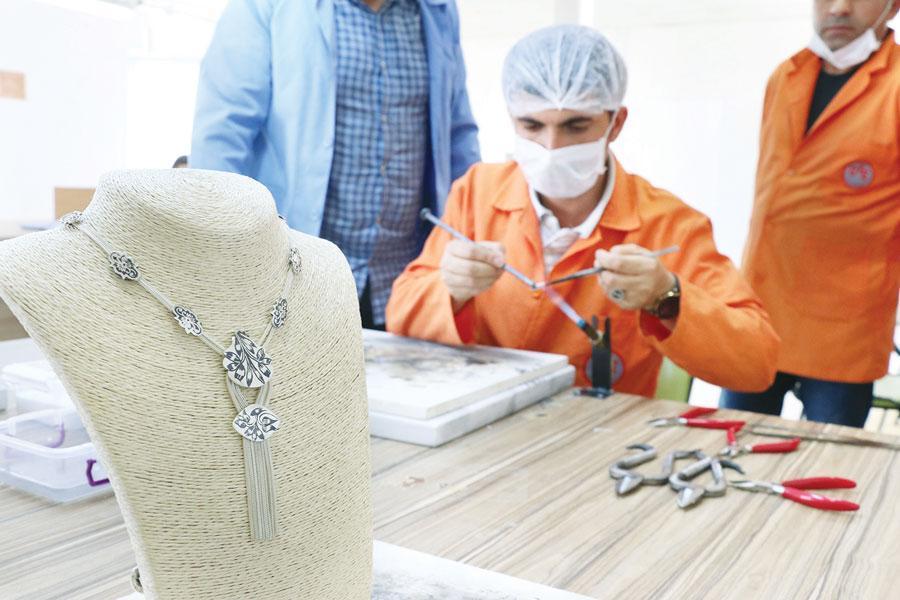Forgotten handcraft revived in Van prison
VAN

Savat, an important handcraft of the Urartians, was vanishing until recently. But the art is now being revived in an atelier by prisoners in a penitentiary in the eastern province of Van.
Dating back to 2,700 years, the silver-based work of savat was a popular art in the Ottoman era, too. But the art lost its importance over the centuries, and mostly after the emergence of technology.
The art of savat is performed by alloy processing made of copper, silver, lead and sulfur on silver with steel pens.
Until 1915, there were 120 savat ateliers in Van. But the art is practiced only by a handful of artisans now.
The goal now is to revive the centuries-old art. New savat artists are being trained in the silver processing workshops opened within the scope of a new project supported by the Van Open Prison, Justice Ministry and the Directorate of Prisons and Detention Houses.
In the atelier, prisoners learn about silver processing techniques and the art of savat with the help of technology in an attempt to maintain the traditional handcraft of the city.
Ezgi Bektaş Dede, a trainer in the Van penitentiary, said they had made a project to revive a forgotten art.
She said the idea emerged when they were thinking of what they could do for the city, with their priority being making cultural and economic contributions to Van.
Stating that most of the prisoners were from the region, Dede said, “We were thinking about providing jobs to them after leaving prison. We received great support from culture officials about the issue. We worked with an artist and agreed to open the ateliers in the prison. All materials have been provided by the Justice Ministry’s Department of Workshops Institution.”
Dede said they carried out works for prisoners in the field of basic education, literacy and occupation.
Successful despite being beginners
“We have decided to open such a workshop for prisoners to take part in the business sector after leaving prison and then applied to the ministry. Now we have two workshops where prisoners learn about all the details of savat. They receive their diplomas approved by the Education Ministry at the end of their training,” Dede said.
She added that the workshop opened six months ago and they established a sales shop in the Van Courthouse, saying that they aimed to open more shops in the city center to sell the products.
She said that despite processing silver for the first time, the prisoners had successfully created “nice” products.
“All prisoners learn about all the stages of silver work. I believe that they will improve with time. Upon orders, we send our products to other prisons. We have 16 trainees, five of whom are working here permanently. They get paid daily and have insurance. They will also get their recommendation letters when they leave,” she said.
Yıldıray Burak, a prison official and workshop chief, said the art of savat dated back to the Urartian era and savat artists were usually employed in palaces in the Seljuk and Ottoman eras.
“Here we process historical values and symbols of Van into jewelries. Among these are the tulip, Van cat and the Akdamar Island. We use pens while carving designs. There are very few savat artists right now. Prisoners are very willing to learn this art. This is why they show great interest in the workshop. They say they spend very good time here. They decide on their own models. They make their own designs and get happy when the works receive interest,” Burak said.
















